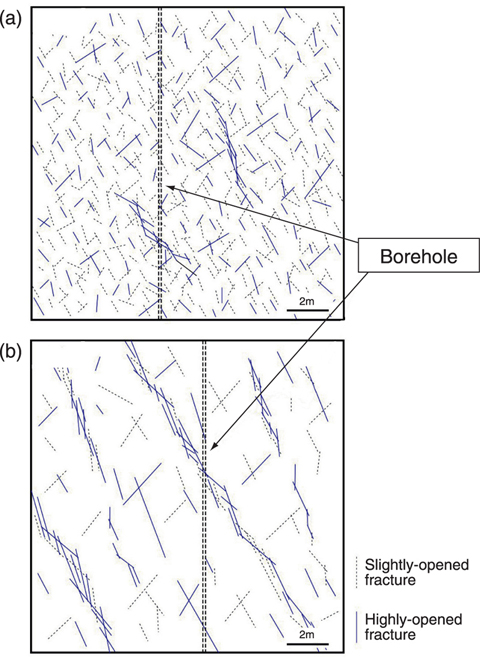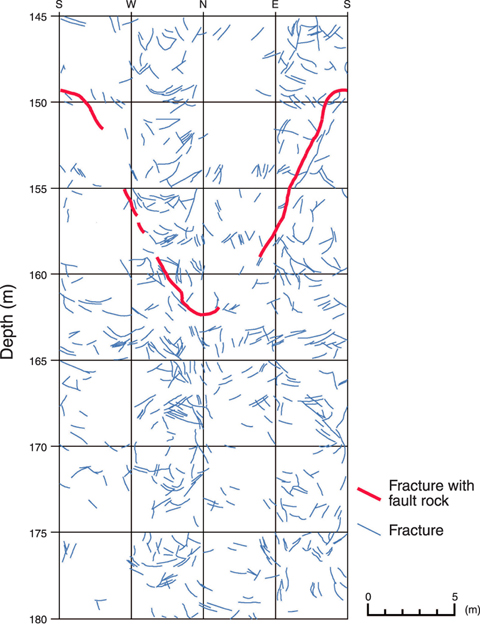
Fig.2-19 Conceptual model for connectivity of fractures

Fig.2-20 Observed fractures in shaft wall
In characterizing a sedimentary rock for modeling and numerical analysis of groundwater flow, it is important to assess how much highly-opened fractures connect with each other below the surface. There is a method for evaluation of connectivity of highly-opened fractures below the surface which measures the water pressure change in several boreholes unconnected to each other and one which observes the wall of an actually excavated tunnel. However, in the early stages of investigation, more information on fracture connectivity must be produced from a few boreholes drilled from the surface.
In order to examine how much the fractures connect in the sedimentary rocks of the Koetoi and Wakkanai Formations, in the Horonobe area in northern Hokkaido, we investigated the proportion of fractures which actually act as main water conducting passages of groundwater among the highly-opened fractures found in one borehole (drilling depth: 520m). Even if fractures are widely opened, in the case of rock where fracture connectivity is not high, those open fractures generally cannot be a main flow path. On the contrary, in the case of the rock where fracture connectivity is high, even if the fracture openings are not wide, those open fractures will easily conduct water.
These statistical results suggest that fractures in the Koetoi Formation are not connected at all, and fractures in the Wakkanai Formation are connected relatively more (Fig.2-19). This lack of fracture connectivity in the Koetoi Formation was indicated by observation of the ventilation-shaft wall constructed recently near a borehole, which revealed no connected fractures more than a few meters long (Fig.2-20).